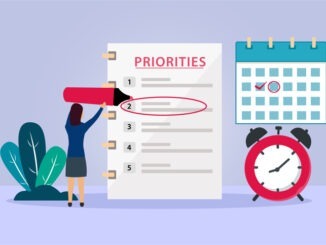
Lead generation is important, but qualifying your leads to determine which ones are worth pursuing can save you time and money – find out more here
CREDIT: This is an edited version of an article that originally appeared on Business News Daily
Lead qualification plays a pivotal role in increasing the number of leads converted into customers. However, accomplishing this task is no easy feat, as only one out of five leads eventually become a customer.
Consequently, for every new customer acquired, there are four who remain unconvinced about utilising your products or services. This represents a considerable loss of time and money. By implementing effective lead qualification practices, the impact of this concern can be minimised.
Lead qualification is the process of predicting the likelihood of a sales prospect becoming a customer. To make informed predictions, data about prospects needs to be gathered through lead capture forms and other methods employed during the lead generation process. Lead qualification begins at the top of the sales funnel and continues until a prospect becomes a paying customer.
Lead qualification goes beyond simply predicting which prospects are more likely to become customers compared to others. It involves determining which leads are worth pursuing and which are not. It is essential to qualify leads by comparing them to your target audience or ideal customer.
Qualifying leads may also involve disqualifying others. Initially, this might seem risky since finding new customers is a fundamental aspect of running a successful business. However, when you can confidently predict that a lead is unlikely to convert, your sales team can save valuable time and resources by not pursuing that lead. Thus, disqualifying poor leads proves beneficial for business growth.
How does lead qualification work?
It typically follows one of four frameworks: BANT, GPCTBA/C&I, CHAMP, or MEDDIC.
BANT
This framework, originally developed by IBM, is commonly used by sales teams to address the following questions:
- Budget: How much budget does the prospect have to fulfil their current need?
- Authority: Does the prospect possess the authority to make purchasing decisions?
- Need: What is the nature of the prospect’s unfulfilled need, and why has it not been addressed yet?
- Timeline: Does the prospect have plans to make a purchase in the near or distant future?
GPCTBA/C&I
HubSpot created this framework to align with modern changes in buyer behaviour. It aims to understand the prospect’s goals, plans, challenges, timeline, budget, authority, consequences, and implications. Key information to gather includes:
- Goals: Short-term and long-term objectives of the prospect.
- Plans: How the prospect intends to achieve their goals.
- Challenges: The reasons prompting the prospect to address the challenge they hope to solve with your product or service.
- Timeline: The prospect’s desired timeframe for implementing their plans.
- Budget: How the prospect perceives the return on investment of your offerings and their budget for similar solutions.
- Authority: Determining if the prospect has the purchasing authority or represents someone who does.
- Consequences and implications: The impact on the prospect and their company if a sale is made.
CHAMP
This framework reverses the BANT approach, focusing first on the prospect’s challenges and then the purchase. It addresses the following questions:
- Challenges: Understanding the prospect’s needs and how their current solutions fall short.
- Authority: Assessing the prospect’s purchasing authority and exploring ways to involve decision-makers.
- Money: Ensuring that the prospect’s budget aligns with your pricing.
- Prioritisation: Determining the prospect’s urgency and considering competing solutions.
MEDDIC
Developed by Jack Napoli of the Sales MEDDIC Group, this framework is especially useful for complex sales processes, particularly in enterprise environments. The six letters of MEDDIC represent the following questions:
- Metrics: How does the sale impact the finances of both parties?
- Economic buyer: Who controls the prospect company’s budget?
- Decision criteria: What information does the economic buyer need to approve purchases?
- Decision process: How does the economic buyer authorise purchases?
- Identify pain: Which needs of the prospect can be addressed by your product or service?
- Champion: Who within the prospect’s company can endorse your offering, and how can you collaborate with them to secure the sale?
It is worth noting that lead qualification frameworks provide a strong foundation for qualifying leads. Evaluating the elements of each framework can help determine which one is most relevant to your target audience.
Follow these steps to qualify leads through scoring:
Develop an ideal buyer profile and demographics
Disqualifying leads becomes necessary at times. A disqualified lead does not match your ideal buyer profile or buyer persona. Establishing an ideal buyer profile helps define your potential prospects. Consider factors such as target audience, market, pain points, and spending abilities that qualify prospects as potential customers. In the case of business-to-business (B2B) sales, company size should also be considered.
Track leads’ engagement
Higher lead scores are associated with increased online engagement with your company. Keep the following considerations in mind when using engagement to score leads:
Email engagement
Opening an email is less meaningful than clicking on links within it. Signing up for an email list is less significant than opening an email.
Social media engagement
Increased likes, retweets, shares, and clicked links indicate higher customer engagement.
Validity
Lead capture forms are essential for lead generation but may not effectively filter out bots. Scrutinise all the information captured by your forms before scoring leads. Names entered in lowercase or personal non-work emails may raise suspicion of being bots. Assign a lower score to such leads until you have contacted them. If they are genuine, you can then increase their score.
Interpret the data
With ample demographic and engagement data on hand, interpretation is crucial to score leads accurately. Follow these steps:
Establish a control value
Calculate the ratio of new customers acquired last quarter to all leads generated in the same period. This control value will serve as a benchmark for comparisons later in the data interpretation process.
Prioritise demographics and engagement types
Utilise data from the previous quarter to identify correlations between specific demographics or engagement types and successful conversions. For instance, if leads who clicked on links in at least 20% of your emails had a high conversion rate, prioritise leads with a high click-through rate. Conversely, if leads who only signed up for your email list rarely became customers, do not prioritise leads based solely on email list sign-ups.
Calculate rates of high-scoring activities
Assign rates to each activity based on its correlation with successful sales. For example, to estimate email click-through rates, divide the number of customers who clicked on links by the total number of leads who clicked on links, including those who did not convert. This ratio serves as your benchmark. Each activity should receive a rate, with higher rates resulting in higher scores.
Compare rates to the control
Suppose you calculate an email click-through rate of 36%, while your control rate is 30%. Since email click-throughs have a stronger correlation with conversions compared to other lead activities, assign a higher score to leads who click on links in your emails. Most lead scores are on a scale of 0 to 100, so you can add 36 points to the score of a lead who clicks through.


Be the first to comment